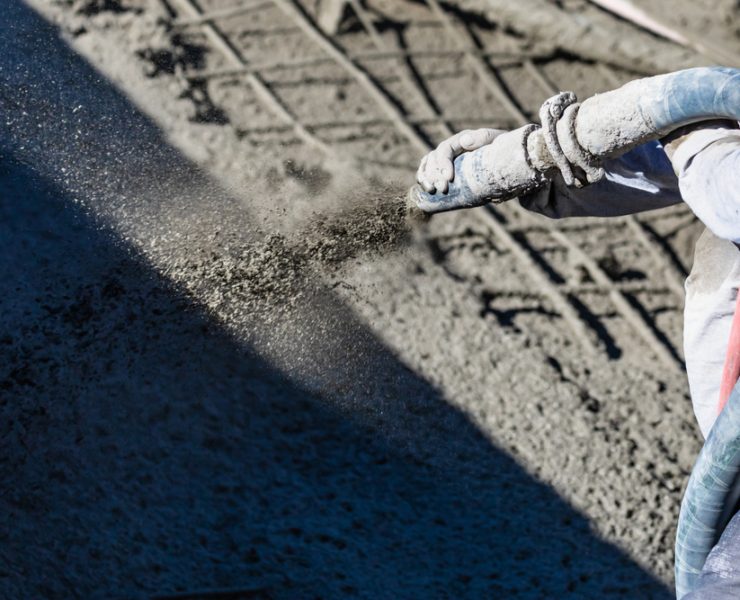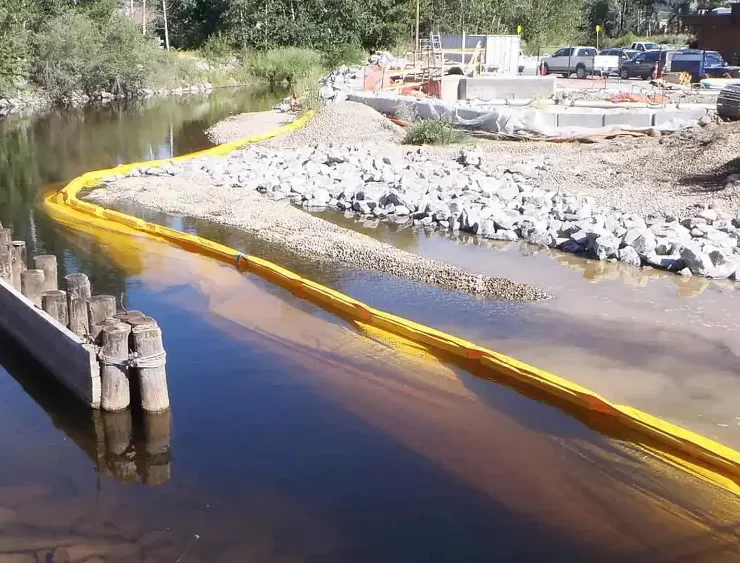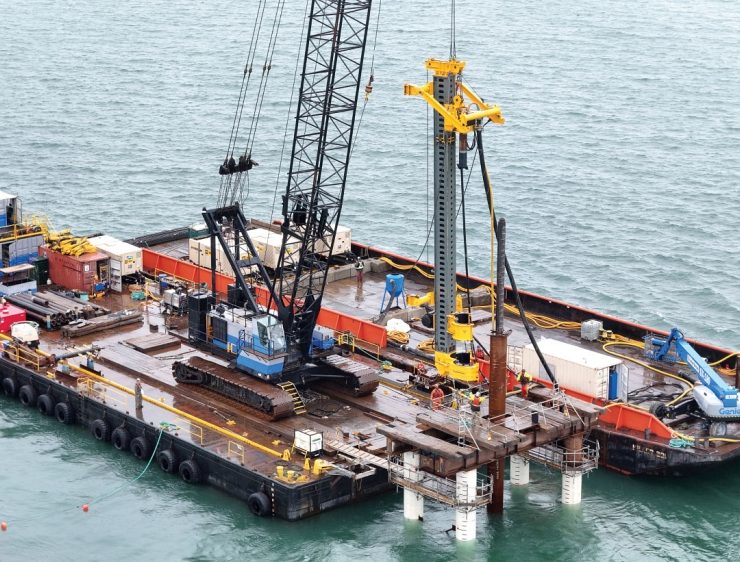Waterfront Facility Inspection: Part III – Timber, Concrete, and Steel Structures

View the complete article here.
5-4 INSPECTION OF TIMBER STRUCTURES
5-4.1 Scoping the Problem
Timber damage is caused by:
• Fungal rot
• Marine borer and insect attack
• Shrinkage
• Overloading
• Connector Corrosion
• Abrasion
• Ice Lift
Waterfront deterioration and damage is found by walking the pier, by inspecting dolphins and below pier decks in a small boat or barge, and by underwater inspections.
When inspecting above the water, the inspector should take maximum advantage of low tide conditions in order to visually inspect the overall condition of the piling. This may determine that an underwater inspection is necessary. The underwater inspection should, on the other hand, take advantage of high water conditions in order to compile the most comprehensive field data on existing conditions.
5-4.2 Surface Inspections
Use Figure 5-10, “Timber Structures and Attachments (Above Water) Checklist” to ensure that a thorough inspection of all timber structures and their attachments above water is done. Include annual load testing of the pier decking if heavy equipment or vehicles are driven onto the pier. Sampling equipment and inspection data to be compiled are in Table 5-4.
The inspector should be alert, specifically in the areas of stringers, pile caps and top of piles, for signs of discoloration and softening of the wood, accompanied by a fluffy or cotton appearance. This may be an early sign of fungi damage. More advanced deterioration may take on the appearance of fruiting bodies, such as mushrooms. Further down the pile, the inspector should look for burrows or hollows in the wood, surface trenches in the outer layers of the pile, and loss of pile diameter. This may be evidence of marine borer attack.
Use Figure 5-11 “Timber Structures and Attachments (Below Water) Checklist” to ensure that a thorough inspection of all timber structures and their attachments below water is done. An engineer should explain to the diver exactly what should be looked for: number and size of piles, type and depth of bulkheads, location of tiebacks, and cross bracing. The engineer shall evaluate the diver’s observations and determine the degree of hazard.
Additionally, when observing damage from marine borers (teredos) precautions need to be taken. As the diver swims up to the pile, he may be able to see the cilia, “waving,” as the worm filters food from the water, Otherwise, the worm feels the disturbance and withdraws the feeding hairs (and closes the opening). The diver is unable to see anything because the opening is:
• Small
• Closed
• Obscured by marine growth and shellfish
5-5 INSPECTION OF CONCRETE STRUCTURES
5-5.1 Scoping the Problem. Concrete damage appears in the following forms:
• Corroded rebar
• Alkali-silica reaction
• Freeze/thaw deterioration
• Abrasion wear
• Chemical deterioration from saltwater
• Overloading deterioration
• Shrinkage
These forms of damage are described in detail in Chapter 3. As with timber structures, concrete damage is found by walking the pier deck, inspecting below the pier deck in a small boat or barge, and underwater inspections.
The primary method of inspecting concrete is visual observation and sounding with a hammer. Only after problems are detected should other inspection methods be used. These other methods may include chipping away loose concrete to reveal the steel, coring, or Schmidt hammer.
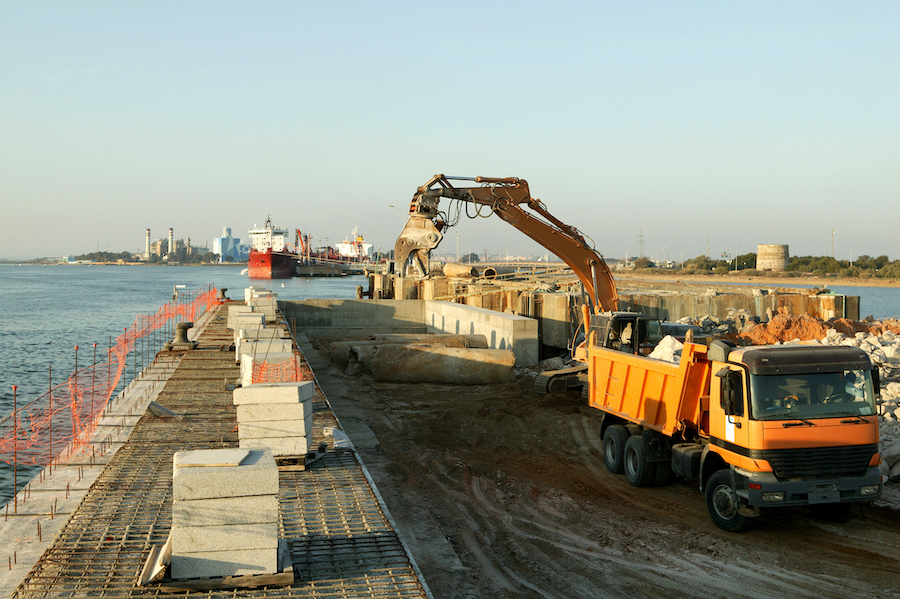
5-5.2 Surface Inspections
Use Figure 5-12 “Concrete Structures and Attachments (Above Water) Checklist” to do a thorough inspection of all concrete structures and their attachments above water. Include annual load testing of the pier decking if heavy equipment or vehicles are to be driven onto the pier. Sampling equipment and inspection data to be compiled are given in Table 5-5.
Areas where the inspector should be particularly watchful for signs of deterioration, include:
• Inside corners and areas where radical changes occur in size of deck sections, curbs, and bollards.
• Construction joints.
• Poorly designed scuppers, drips, and curb slots, and other areas where inadequate drainage exists.
• Joints between the deck and pile cap, expansion joints where insufficient gap is allowed, and rigid joints between precast piles and cast-in-place pile caps.
The inspector should be alert for any change in appearance of the concrete surface and any change in the sound from the hammer:
• Erosion of the surface material or by cracking on the surface are signs of chemical attack.
• Erosion of surface material is a sign of freeze-thaw deterioration.
Use a hammer or gad (sharp pointed tool) to chip or probe the surface to detect the depth of deterioration.
Corrosion of the reinforcement can be detected from rust stains on the surface. More advanced stages of corrosion is indicated by cracks that run parallel to the steel reinforcing bars. At times, corrosion is hidden from view, but will be indicated by a hollow sound from the hammer. This can occur on heavily reinforced slabs, such as pier decks, where the reinforcement has corroded enough to delaminate a layer of concrete at the level of the reinforcing mat.
Give special attention to cracks found on the surface of a concrete structure. Make sketches that show the length and direction of the cracks. Overall cracking patterns and changes in crack length, width and direction with time are meaningful data to a structural engineer. Photographs are helpful, but only as a supplement to the sketches.
If there is evidence of significant deterioration, more detailed NDT techniques may be used in a scheduled Level III inspection. Refer to the Level III test procedures for concrete inspection for mechanical and electrical test methods in the Paragraph entitled, “Level III Test Procedures for Concrete Inspection.” The plan and sampling techniques shall be tailored to the specific areas of concern.
Use Figure 5-15 “Concrete Structures and Attachments (Below Water) Checklist” to ensure that a thorough inspection of all concrete structures and their attachments below water is done. An engineer should explain to the diver exactly what should be looked for: number and size of piles, type and depth of bulkheads. The engineer will evaluate the diver’s observations and determine the degree of corrosion.
5-5.4 Level III Test Procedures for Concrete Inspection
If signs of deterioration or damage are found by Level I or II inspections then a Level III inspection, involving either nondestructive or destructive tests, may be required. Level III concrete inspections use mechanical and electrical test methods.
Mechanical and electrical test methods include:
• The Schmidt test hammer may be used in order to compare the relative surface quality of concrete at different locations on the same structure. The instrument measures the hardness of concrete surfaces by the extent of rebound of a spring-loaded steel plunger in a tubular frame. The relative surface quality of the concrete, which is also an indication of its compressive strength, can be obtained. Surface texture may reduce values obtained.
• Core samples are destructive in nature and should only be used if other techniques cannot satisfactorily define the damage. Core samples may be taken from selected areas in order to determine the cause and depth of deterioration, chloride, ion contamination for petrographic analyses, and the actual compressive strength. Take special care when setting up to drill a core, in order to avoid hitting steel reinforcement, especially prestressed steel. Steel reinforcement near the surface can be located by using a pachometer (rebar locator). The length of the core sample should be twice the diameter. After the core has been taken, patch the hole with non-shrink cementitious mortar.
• ASTM C876, Corrosion Potentials of Uncoated Reinforcing Steel in Concrete can be used to determine the extent of active corrosion and the degree of susceptibility of corrosion in other areas in the structure. Corrosion can be detected before visible signs appear. The method detects corrosion by measuring the electrical potential of the steel. An electrical connection is made from one side of a voltmeter to an embedded steel-reinforcing bar that has been exposed. The other side of the voltmeter is connected to a copper sulfate half-cell, which is then put in contact with the concrete surface at various locations. The magnitude and sign of the resulting voltage is an indication of corrosion activity.
• Ultrasonic methods are available to inspect concrete for voids that cannot be seen, such as honeycomb pockets, and for internal deterioration by cracking. Pulse velocities and fundamental frequencies are imposed in the concrete structure to search for imperfections. Sonic methods conducted at specific time intervals can monitor progressive deterioration. Interpretation of data is a highly specialized skill.
Before starting any of the above tests, a test plan must be prepared and the areas to be tested must be cleaned thoroughly.
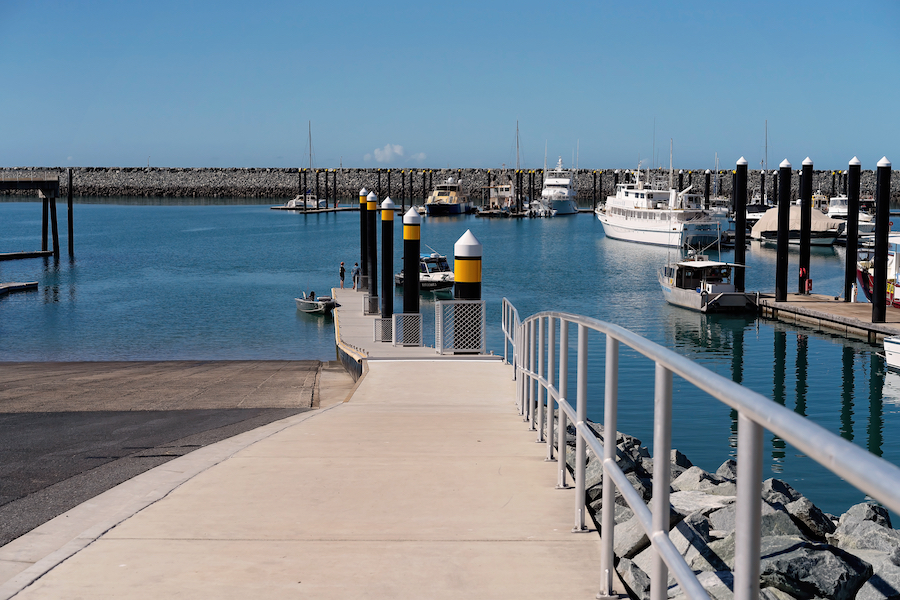
5-6 INSPECTION OF STEEL STRUCTURES
5-6.1 Scoping the Problem
There are six major types of steel structure deterioration to watch for in the marine environment:
• Corrosion
• Abrasion
• Loosening of structural connections
• Fatigue
• Overloading
• Loss of foundation material
The causes and forms of steel deterioration are described in detail in Chapter 3.
5-6.2 Surface Inspections
Generally, visual inspections will detect most forms of deterioration of steel structures. Use Figure 5-16 “Inspection of Steel Structures (Above Water) Checklist” to ensure a thorough inspection of steel structures above water is done. In the event that more detailed NDT techniques are required under a Level III inspection, a plan and sampling techniques must be developed and tailored to the specific areas of concern.
Some types of corrosion, however, may not be detected by visual inspections. For example, inside steel pipe piling, anaerobic bacterial corrosion caused by sulfate-reducing bacteria (Figure 5-17) is difficult to detect by visual inspection. Fatigue distress can be recognized by a series of small hairline fractures perpendicular to the line of stress but these are difficult to locate by visual inspection. This type of problem, however, is more prevalent to offshore platforms with welded structural connections than to standard piers and wharves.
Cathodic protection systems need to be closely monitored both visually and electrically for signs of loss of anodes, wear of anodes, disconnected wires, damaged anode suspension systems, and low voltage.
5-6.3 Underwater Inspections
Use Figure 5-19 “Under Water Steel Structures Checklist” to ensure that a thorough inspection of underwater steel structures is done. An engineer should explain to the diver exactly what to look for: number and size of piles, type and depth of bulkheads. The engineer shall evaluate the diver’s observations and determine the degree of hazard.
View the complete article here.
What is considered during the inspection of timber structures in waterfront facilities?
During the inspection of timber structures in waterfront facilities, factors such as decay, insect infestation, mechanical damage, chemical damage, and fire damage are considered. It's crucial to assess the physical state of timber piles, caps, wales, bracing, and decking.
How are concrete and steel structures in waterfront facilities inspected?
When inspecting concrete structures, inspectors look for cracking, spalling, erosion, and corrosion of reinforcement. For steel structures, they check for corrosion, deformation, buckling, and connection issues. The goal is to evaluate the structural integrity and durability of these components and recommend necessary maintenance or repair measures.














